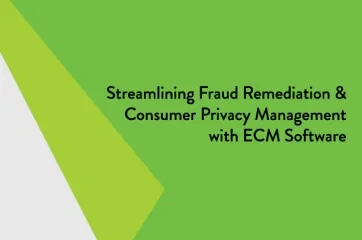Deposit imaging is the process of digitizing paper documents that are associated with deposit accounts. When properly implemented, deposit imaging provides an enhanced approach to paper-based deposit document management, enabling bank and credit union employees to quickly access important customer, member, and account information.
Deposit Account Essentials
Keeping new accounts on track and in compliance is important for any financial institution that offers deposit accounts. Banks and credit unions go through several steps and collect a variety of account holder information during account creation.
Items that may be required for a new deposit account include:
- A signature card (either on paper or in an e-sign product)
- Customer identification profile (CIP), which establishes that the bank or credit union has opened an account for a customer or member, asked for proof of identity, and collected his or her tax identification number
- A ChexSystems verification to search for charge-offs or write-offs on an applicant’s former deposit/checking accounts at other financial institutions
- A copy of the customer or member’s driver’s license
Account opening disclosures
Document preparation systems usually generate many new account forms, such as the signature card disclosure form and the CIP.
Core Capabilities vs. Third-Party Deposit Imaging Systems
A financial institution’s core system provides a standard teller platform, allowing rapid access to a customer or member’s driver’s license and signature card to verify identity for check cashing.
Some banks and credit unions also implement third-party banking software, such as AccuAccount, to gain additional deposit imaging efficiencies. Such systems can provide enhanced tickler features for tracking missing information or signatures on new deposit accounts. They can also enable secure and controlled access to signature cards and driver’s licenses across all branches. Additionally, third-party deposit imaging systems decrease physical storage space for closed accounts, which financial institutions are typically required to retain for a specific time-period in accordance with retention policies.
Deposit Imaging Resources
Looking for more information about how deposit imaging software can increase productivity and reduce paper storage demands? Check out AccuAccount for deposit imaging and exception management.
Browse our banking definitions page for more terminology.














